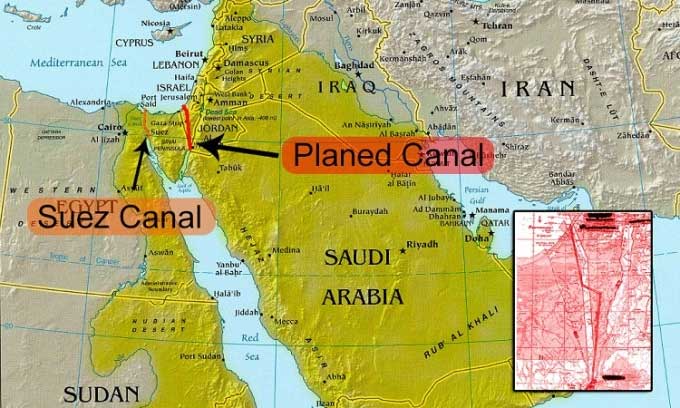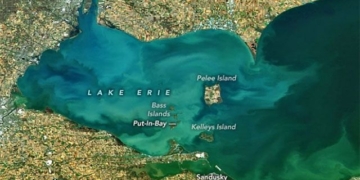The United States once planned to use nuclear bombs to create a 257 km canal through Israel as a replacement for the nearby Suez Canal.
The U.S. government considered a proposal to use 520 atomic bombs to construct a project that would serve as an alternative to the Suez Canal running through Israel in the 1960s. Although this plan never materialized, having an alternative waterway could have been beneficial when a cargo ship got stuck in the Suez Canal in March 2021, blocking one of the world’s most vital waterways, according to Business Insider.

Suez Canal and the proposed U.S. canal. (Photo: USA in Pixels).
According to a memorandum from the Lawrence Livermore National Laboratory of the U.S. Department of Defense, revealed in 1996, the researchers’ plan was to use nuclear explosives to create a canal in the Dead Sea running through the Negev Desert. This new canal would stretch 257 km, run through Israel, and be at sea level. While traditional excavation methods are extremely costly, nuclear bombs could be applied in this case. Such a canal could significantly contribute to economic development.
The laboratory’s scientists estimated that 4 devices of 2 megatons each would be needed for every 1.6 km segment. Historian Alex Wellerstein calculated that this number equates to 520 nuclear bombs or 1.04 gigatons of explosives (one gigaton equals one billion tons of explosives). The proposed feasible route would cut across the Negev Desert in Israel, linking the Mediterranean Sea with the Gulf of Aqaba, thereby opening a route to the Red Sea and the Indian Ocean. The laboratory emphasized that there are 209 km of uninhabited wasteland in the desert, making it suitable for excavation using nuclear weapons.
Preliminary research indicated that using bombs to create a canal through Israel appeared to be “technically feasible.” However, the memorandum also pointed out a problem that the research team had not considered, which was the “political feasibility” as surrounding Arab countries would strongly oppose the construction of the canal.
The memorandum was discovered when the U.S. Nuclear Regulatory Commission investigated the use of peaceful nuclear explosives (PNE) for excavating useful infrastructure. The project was halted at the testing stage when the U.S. realized that 27 experiments with PNE emitted radiation into the environment. Meanwhile, the Lawrence Livermore National Laboratory continues to operate today and remains a leading facility in nuclear research.


















































